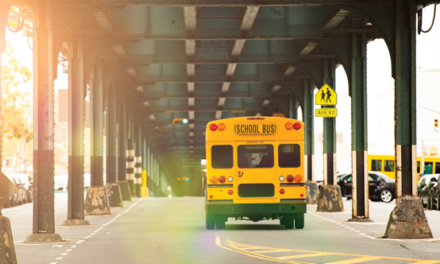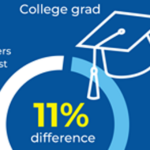Is it time to abolish school boards? If you’ve seen the recent news about protests turning violent at school board meetings, you’d no doubt wonder if there’s any value to them anymore. In early June, a literal brawl broke out at a school board meeting in Glendale, California, over the school board’s plan to pass a resolution proclaiming June as LGBTQ+ month. In New Haven, Connecticut, a disagreement over a new superintendent appointment led to personal attacks that escalated into an affray. In Fort Myers, Florida, anti-masking protesters attacked medical professionals who spoke at a school board meeting on the importance of COVID-19 safety measures. In Cottage Grove, Oregon, two security guards accosted a woman protesting in support of transgender students at a school board candidate forum. We are seeing the wounds of the “culture war.”
These fights garnered recent media attention. But school boards long have been the targets of criticism, often over test scores and student learning. The massive pandemic learning loss, documented by Tom Kane and Sean Reardon on the Education Recovery Scorecard website, illustrates the deep crisis public schools now find themselves in. Vladimir Kogan (2022) argues that the pandemic revealed school boards’ inability to respond to the needs of parents and children.
Prior to Kogan, Rick Hess (2010) placed the blame for school boards’ flaws on the political structure of the district. Both Hess and Kogan echo the critique from John Chubb and Terry Moe (1990) that pointed to school district bureaucracy and attempts at democracy as primary sources of school failure. Even if you disagree with them (which I do), the lack of progress school boards have made on improving student achievement and closing achievement gaps is alarming.
However, despite the valid critiques, abolishing school boards would be a critical mistake. I have three reasons for this position.
Old habits die hard
The main reason America has school boards is because America has always had them. In nearly every other country with a public education system, a national bureaucracy makes major policy decisions. Only in the U.S. is education decided locally. Our civic identity is rooted in the de Tocquevillian idea of neighborhood associations and local civic groups gathering to solve community problems. School boards reflect this ethos. Even when schools were one-room structures in agricultural communities, “school committees” selected teachers, oversaw curriculum, and handled finances. This relic of doing business has become an American trademark.
As America changed, school boards evolved. The advancement of rights at the federal level made school boards responsible for not just administering education but also fostering equity. School boards had to figure out how to support the education of Black students, even where white parents were vehemently opposed. School boards have had to decide how to support students with a variety of needs, even as state legislatures have imposed accountability systems and slowly siphoned away the kind of decision-making power that might allow boards to address student needs more creatively. Serving on a modern school board is like trying to perfectly fold fitted bedsheets.
Despite the stressors, Americans still support school boards. This year’s PDK Poll finds that Americans would rather local school boards have influence over what’s taught than state governments. In my own research, I find clear evidence that the public prefers school boards over more modern options, such as mayoral control and school-based management. Americans are at least twice as likely to prefer school board control over that of state education agencies or the U.S. Department of Education. This preference holds across racial and economic groups. People like school boards, flaws and all.
Opportunity for mass participation
It’s understandable if tradition is an underwhelming argument for school boards. If you are a member of a marginalized community, few American relics have contributed to your advancement. School boards — under pressure from parents and groups who favor segregation — have allowed schools to persist as separate and unequal. But this very fact shows that constituents, communities, and families can influence school boards into taking action. Pressure can come from any side.
School boards create important opportunities for mass democratic participation. Most school boards are elected, which allows the public to choose their representation. Additionally, in theory, school boards allow for the kind of political participation that voting in elections does not. Most school boards hold monthly public meetings that are open to parents, students, and community members. Unlike in an election, children under 18 can participate in these meetings, as can those who are undocumented or unhoused.
Is every school board meeting a site for transformative discourse on equity and justice? No, especially in this current political moment. However, there are pockets where this is occurring. Carrie Sampson (2019) and Sonya Horsford and colleagues (2018) have been highlighting the work of school board members who put equity on the agenda of board meetings and maintain open dialogue with marginalized communities.
In my work, I find experimental evidence suggesting that institutionalizing dialogue at school board meetings can lead to higher attendance from members of marginalized groups. Some of my more recent work has shown how school boards turn to democratic innovations like participatory budgeting, which fosters deeper levels of public engagement and empowerment from members of marginalized communities. School boards can create spaces where people who are typically left out of the political system have a meaningful voice.
Capacity for idiosyncratic problem-solving
Despite the participatory potential of school boards, critics will look at the idea of public dialogue as not substantive. It sounds nice, but the key to high student achievement is creating quality schools, right? From that logic, we can draw the claim that, if we want results, we need to highlight which schools are doing the right things and give parents the option to send their kids there. In this scenario, the alternative to school boards is a wild terrain of (potentially even more) unequal schools.
We need school boards, not just to improve individual schools, but to improve entire systems of schools. The beauty of school boards is that they can identify local problems and address those problems with systemic solutions. It doesn’t mean that school boards will easily and readily solve deep structural problems like racism, sexism, and inequality. However, it does mean that, for example, when one school in a system is exposing kids to toxic drinking water, a school board can produce a response to protect all students across schools. School boards can identify and solve issues specific to local student experiences but on a systemwide scale. This ability has tremendous value.
Perhaps you remain skeptical. In fairness, the current political climate tells us that you probably should be. Before we give up on school boards, let’s consider what’s been happening in Burbank, California. Adjacent to the studio lights and production cameras of the city’s main industry, there is a school board operating that more of us should be talking about.
In fact, I have been talking about it.
My experimental research is built on what has been happening there. For more than 15 years, the Burbank Unified School District’s Board of Education has been structuring their school board meetings so that the superintendent and school board members respond to parents, students, and teachers who show up to meetings and make public comments. The response is not usually one-to-one. The superintendent and board members typically respond not to specifics but to the general policy themes that emerge.
Through this arrangement, they’ve been able to address a host of policy concerns. In 2017, after a lengthy series of public comments from students, the board made changes to the student dress code. The previous iteration penalized girls for wearing spaghetti strap tops that “detract from the academic environment.” Back in 2012, the board updated its policy on head lice after a community member presented a letter and a signed petition. With public support, the board has maintained a dynamic program called Arts for All that gives students access to high-quality, standards-based arts education programming. They’re creating a pipeline to the television and movie studios in their backyard. Meanwhile, all the policy efforts happen as their students consistently perform above the state average academically.
Abolishing school boards may get rid of an antiquated institution, but at what cost? Eliminating boards gets rid of all the institutions like the one in Burbank that hum along to the tune of quiet accomplishment. Strong school boards offer our best chance of producing strong school systems. In a moment where Americans are more divided than before, school boards can bring people together.
They are worth saving.
References
Chubb, J.E. & Moe, T.M. (1990) Politics, markets, and America’s schools. Brookings Institution.
Collins, J.E. (2021) Does the meeting style matter? The effects of exposure to participatory and deliberative school board meetings. American Political Science Review, 115 (3), 790-804.
Collins, J.E. (2021) Should school boards be in charge? The effects of exposure to participatory and deliberative school board meetings. Peabody Journal of Education, 96 (3), 341-355.
Hess, F.M. (2010). Weighing the case for school boards: Today and tomorrow. Phi Delta Kappan, 91 (6), 15-19.
Horsford, S.D., Scott, J.T., & Anderson, G.L. (2018) The politics of education policy in an era of inequality: Possibilities for democratic schooling. Routledge.
Kogan, V. (2022). Locally elected school boards are failing: Pandemic stress-tested school governance, revealing many flaws. Education Next, 22 (3), 8-13.
Sampson, C. (2019). From a lighthouse to a foghorn: A school board’s navigation toward equity for English learners. American Journal of Education, 125 (4).
This article appears in the September 2023 issue of Kappan, Vol. 105, No. 1, pp. 58-59.
ABOUT THE AUTHOR

Jonathan E. Collins
Jonathan E. Collins is an assistant professor of political science and education and the associate director of the Columbia University Center for Educational Equity, both at the Teachers College, Columbia University, NY.










